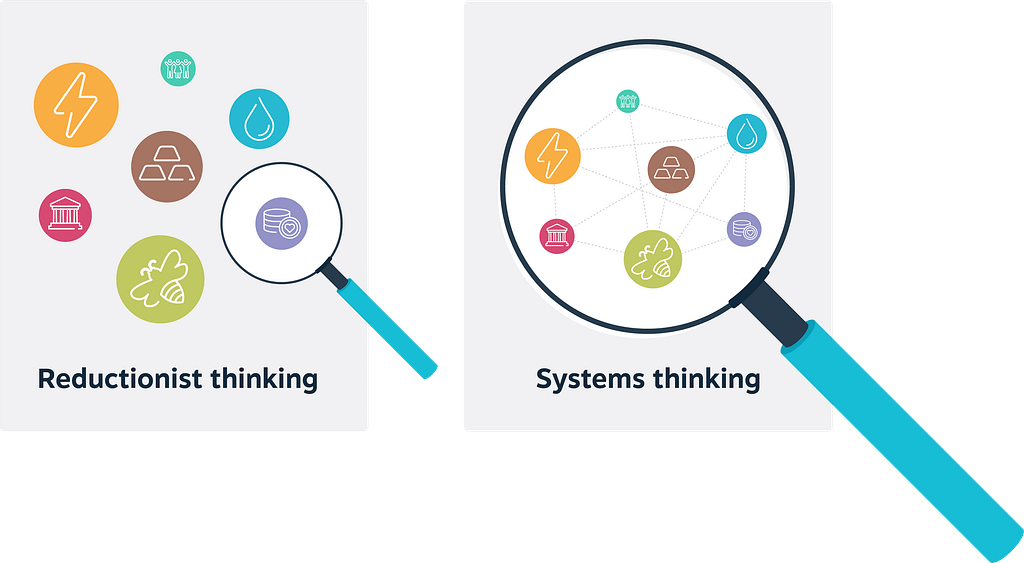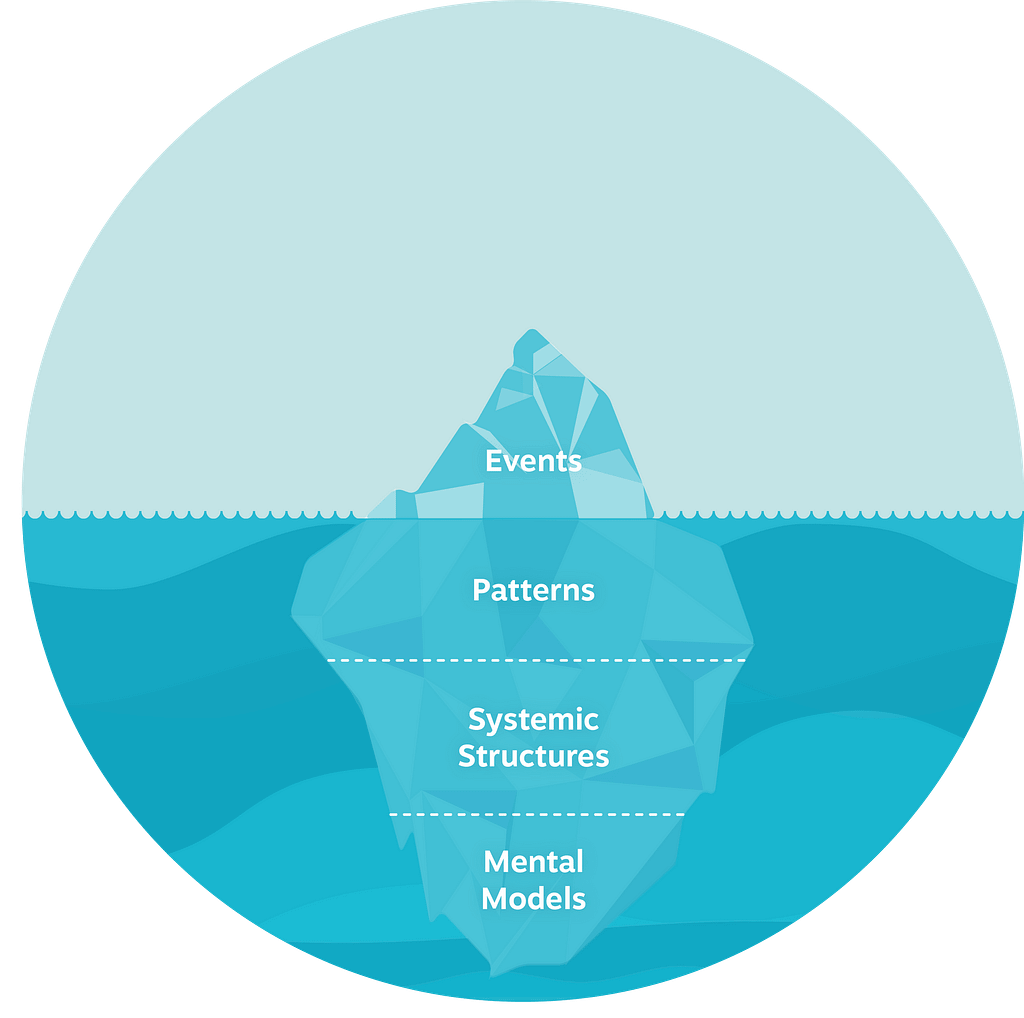Systems Thinking

A systemic approach to sustainability
The social and environmental problems resulting from our economic system can often feel independent from one another. At Metabolic, we take an integrated view of these issues – from climate change and biodiversity loss to human health and economic stagnation – acknowledging that many of these challenges are inextricably linked, and stem from a few key root causes.
Finding genuinely sustainable solutions requires a deep understanding of how different parts of a system – be it a company, city, sector, or the entire economy – fit together. Solving problems without considering the broader context in which they exist can trigger knock-on effects elsewhere, and often lead to new, more severe, problems.

Rubik’s cube
Explaining complex systems
A helpful way to understand complex systems is to think of a Rubik’s Cube. Moving one coloured square affects more than that square alone; it disrupts the colours on five other sides of the block. Our earth system is similar. While social and environmental problems can often feel independent from one another, issues like climate change and biodiversity loss, human health and economic stagnation, are all inextricably linked.
Four levels of thinking
Understanding root causes
Systems thinking can help us to understand and address the deeper structures and mental models at the root of a problem. Events represent only the “tip of the iceberg”. However, because they are most visible and immediate, attention is often directed at the “end of the pipe,” and interventions are aimed only at addressing the symptoms of a problem rather than its root causes.

Finding leverage

Systems principles
To illustrate how systems thinking helps us drive forward our mission, here are some of the core principles we keep in mind when developing approaches to tackle complex sustainability challenges.
Featured projects

WWF: An Analysis of the Global Food System
- Agrifood

WWF: Applying Systems Thinking to the European Food System
- Agrifood

Smart Freight Centre: An Analysis of the Freight System
- Industries
Testimonials
Sometimes we come across these great reports that explain a complex phenomenon, like systems thinking, in a simple way. This certainly holds for the report by Metabolic! We now see so many ways to continue, and improve, our systemic change workshops with smallholder farmers, NGOs, private industry and the government in emerging economies.
Rob Lubberink
OSMARE
Metabolic encouraged and demonstrated the power of embracing a new mindset for solving systemic issues. By driving home the point of systems thinking, Metabolic has helped to instill a new core value in the decision making process: how sustainable is this project from a system wide perspective?
Giacomo Molteni
Unilever
This report is one of the first steps in broadening the city’s focus from how we manage waste to how we manage materials. Boulder is a leader in waste reduction, however, in order to really address the climate crisis, the city needs to lead the way in implementing deep, systemic change through coordinated action to foster a circular economy.
Kara Mertz
City of Boulder
To truly ‘build back better,’ a systems approach is key
Our socio-economic system is complex, multi-layered, and deeply intertwined with the natural world on which we depend for our livelihoods. We need to take the time – especially now – to look at our world anew using the lens of systems thinking. Only by understanding the deep interconnections between institutions, people, and the environment will we be able to craft pathways toward a genuinely sustainable and resilient economy; one that works for all people and supports the flourishing of all living beings.
